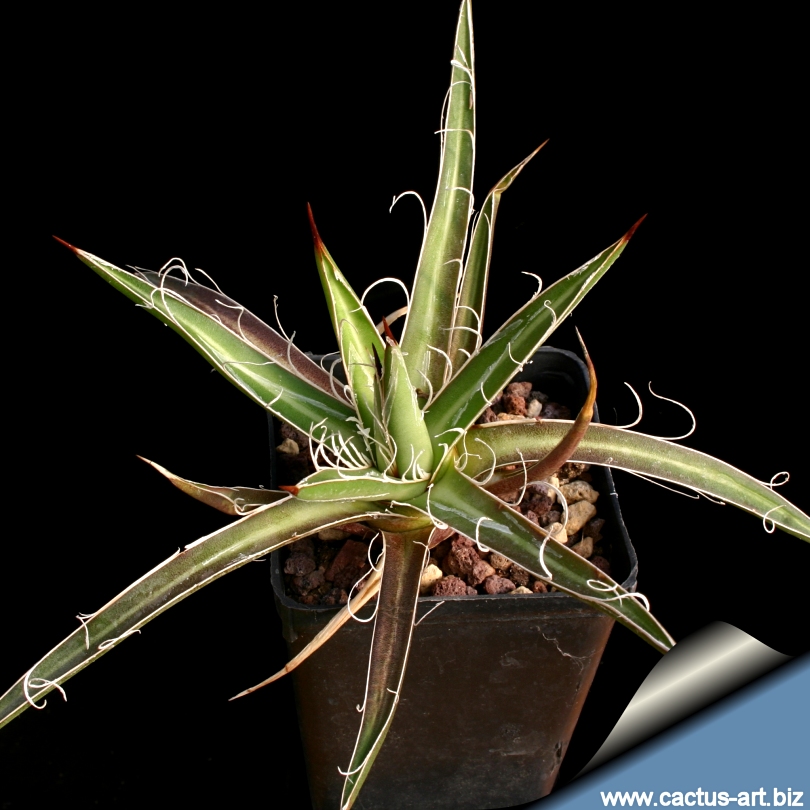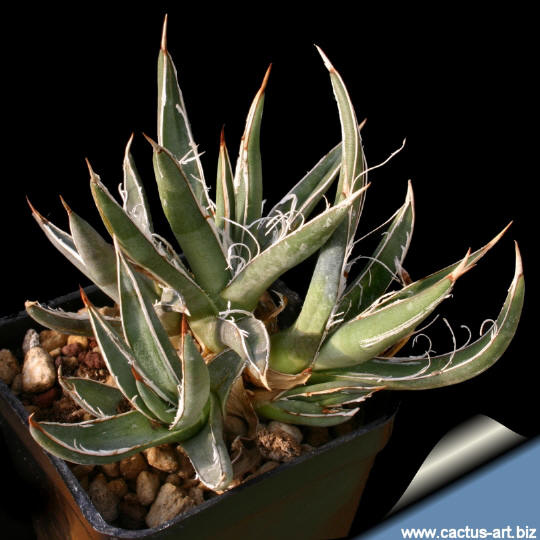|
|
|

Agave
leopoldii is one of the smaller, slower growing agaves. In Japan
this plant is cultivated under the name "Taki no silaito" which translates
loosely as "White Thread of Cascade".
|
|
Description: Miniature hybrid species that has
lots of
fibres
peeling off its short, very narrow leaves, and lots of
suckers.
Rosette: Up to 30 cm tall and wide, compact, densely covered with
leaves.
Leaves: Upright narrow spine-like, light green, decorated with
white markings and curling threadlike fibrous margins that peel back
giving the entire plant a hairy look.
It is easy to tell what features the Agave filifera contributed to this
charming hybrid.
Flowers: Not particularly showy, but at any rate interesting with
dark yellow anthers atop red stamens.
Photo of conspecific taxa, varieties, forms and
cultivars of plants belonging to the
Agave filifera
complex
(
|
|
Advertising
|
|
|
|
|
Family: Agavaceae
Scientific Name: Agave x leopoldii Hort. ex G. Nicholson
Origin:
Garden origin.
Hybrid of Agave filifera ssp. filifera ×
Agave filifera ssp. schidigera
First described: by G. Nicholson in 1900 and published in
Garden Chronicles in 1912 it was later described as a garden hybrid
between Agave filifera and
Agave schidigiera (now
A. filifera ssp.
schidigiera) by Alwin Berger in his 1915 “Die Agaven”.
In Japan this plant is cultivated under the name Taki no silaito
which translates loosely as "White Thread of Cascade".
|
|
|
|

The distinct white markings are unique, like mini-variegation bordering
each leaf and give it the appearance of a mass of hairy spines.
Cultivation: Leopold agave (Agave leopoldii)
is often grown as a houseplant. Suited for
light shade to
full sun. It grows well from
suckers or seed and forms attractive specimens. Though no good data
has been found to indicate the hardiness of this plant, but both
parents are to at least -6° C, particularly when dry.
It is great in small pots or nestled into a rock crevice.

 |
|